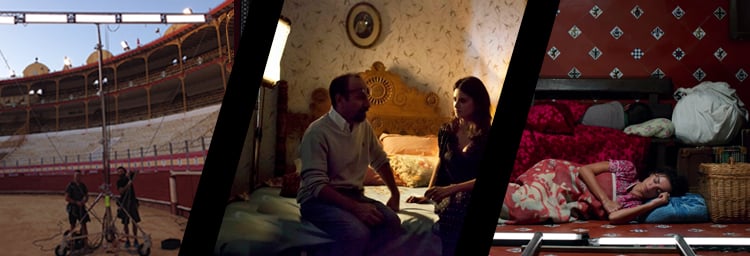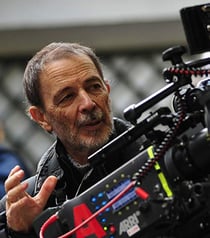 José Luis Alcaine is one of Spain’s most distinguished cinematographers. He is known for his work on legendary Spanish films like Jamón Jamón, Tie Me Up! Tie Me Down, Women on the Verge of a Nervous Breakdown, and Belle Epoque, amongst many others. His vast cinematic body of work features over 150 films, numerous awards – including five Goya Awards, Spain’s National Cinematography Award, and the European Film Awards – and he has collaborated with influential film directors such as Vicente Aranda, Carlos Saura, Fernando Trueba, Víctor Erice, and Montxo Armendáriz.
José Luis Alcaine is one of Spain’s most distinguished cinematographers. He is known for his work on legendary Spanish films like Jamón Jamón, Tie Me Up! Tie Me Down, Women on the Verge of a Nervous Breakdown, and Belle Epoque, amongst many others. His vast cinematic body of work features over 150 films, numerous awards – including five Goya Awards, Spain’s National Cinematography Award, and the European Film Awards – and he has collaborated with influential film directors such as Vicente Aranda, Carlos Saura, Fernando Trueba, Víctor Erice, and Montxo Armendáriz.
José Luis Alcaine recently worked with three prominent film directors to shoot their latest films: Brian de Palma – Domino, Asghar Farhadi – Everybody Knows, and Pedro Almodóvar – Pain and Glory. Known for his ability to make light look natural and the emotional moments of the characters palpable, José shares below how he used numerous DMG Lumière LED fixtures to illuminate the stories that each director set out to tell.
Domino
Domino is a terrorism thriller that was shot in Copenhagen, Denmark and Almería, Spain that illustrates José Luis Alcaine’s effort to avoid monochromatism. “I don't like movies in which everything is blue, or grey, or green. To begin with, it doesn't do justice to real life. Domino is not governed by a single tone. I try to avoid it in photography because it makes the film fall into monotony. I like to introduce many changes in a single work; reflect the difference between midday light and nightlight.”
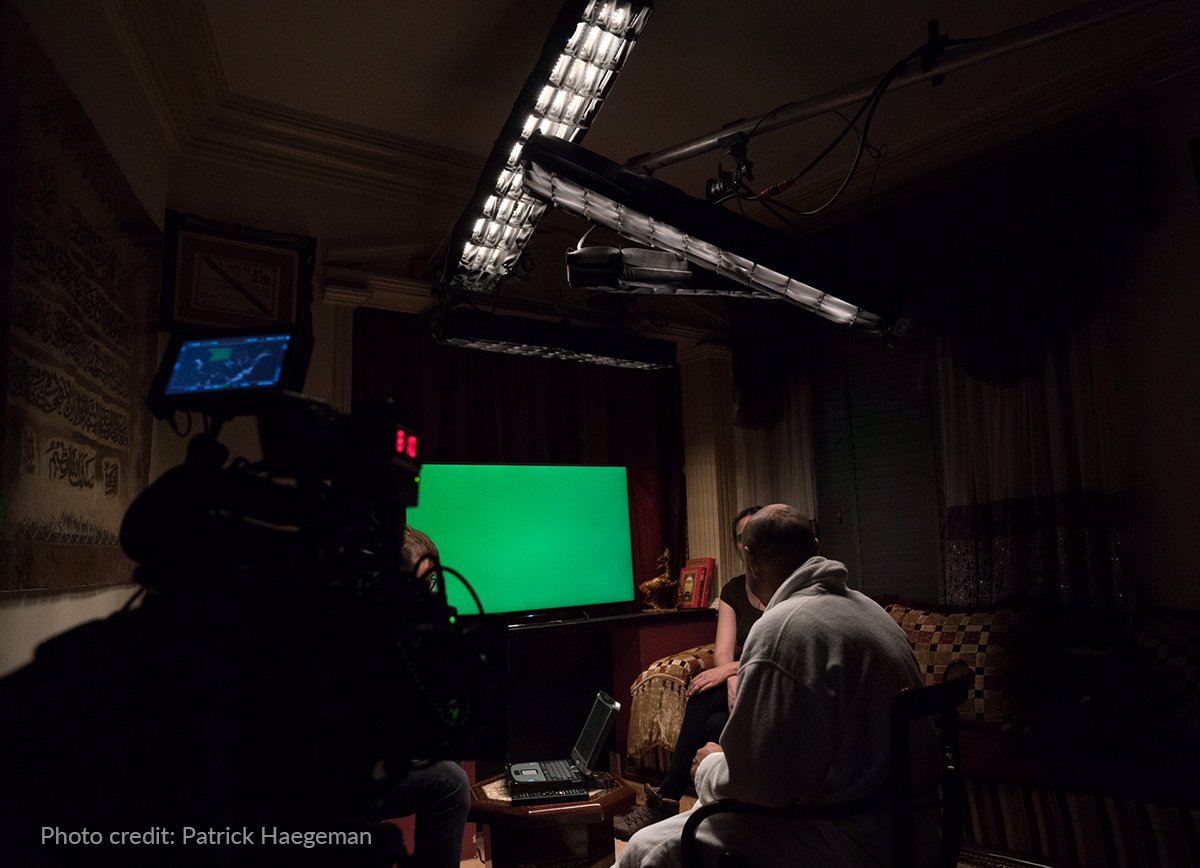 DMG Lumière SL1 SWITCH fixtures with snapgrids are mounted as ceiling lights to film a scene of Domino.
DMG Lumière SL1 SWITCH fixtures with snapgrids are mounted as ceiling lights to film a scene of Domino.
It is the special attention José Luis Alcaine pays when illuminating the eyes and faces of his actors and actresses that made Brian de Palma keen to work with the veteran master of cinematography (Domino is their third collaboration). “I think the actors and actresses should be seen as well as possible, as it is in their facial expressions, especially their eyes, where the whole spectrum of emotions abides”, says José Luis Alcaine.
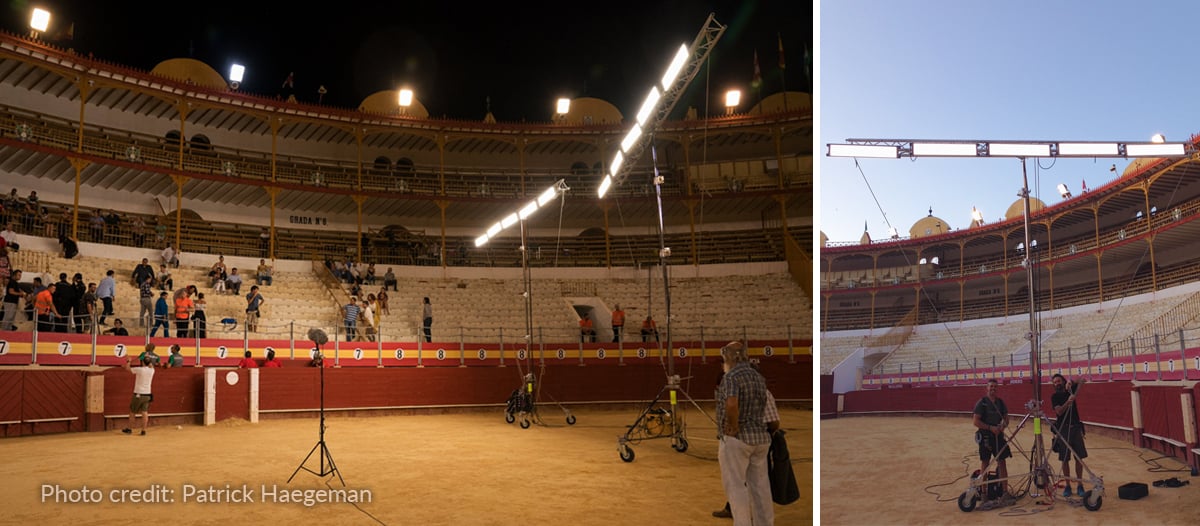 DMG Lumière SL1 SWITCH fixtures illuminate the bullfighting ring in Almería, Spain during the filming of Domino.
DMG Lumière SL1 SWITCH fixtures illuminate the bullfighting ring in Almería, Spain during the filming of Domino.
For the scenes shot inside the bullfighting ring in Almería, for example, José Luis Alcaine used numerous DMG Lumière SL1 SWITCH fixtures mounted in a row to not only reproduce the light of a bullfighting ring at night, but also properly illuminate the characters’ faces in order to heighten the suspense of the moment.
Everybody knows
There are several examples of José Luis Alcaine’s use of DMG Lumière lights to emphasize emotional moments of the characters in Asghar Farhadi’s film Everybody Knows - a psychological thriller set in Spain, starring Penélope Cruz, Javier Bardem and Ricardo Darin. For example, in one of the scenes where the main character Laura (Penélope Cruz) is in her bedroom, helpless after learning about her daughters’ kidnapping, José Luis Alcaine used a DMG Lumière MINI SWITCH fixture as the key light to enhance the star actress’ face and reinforce the emotional plight of the character.
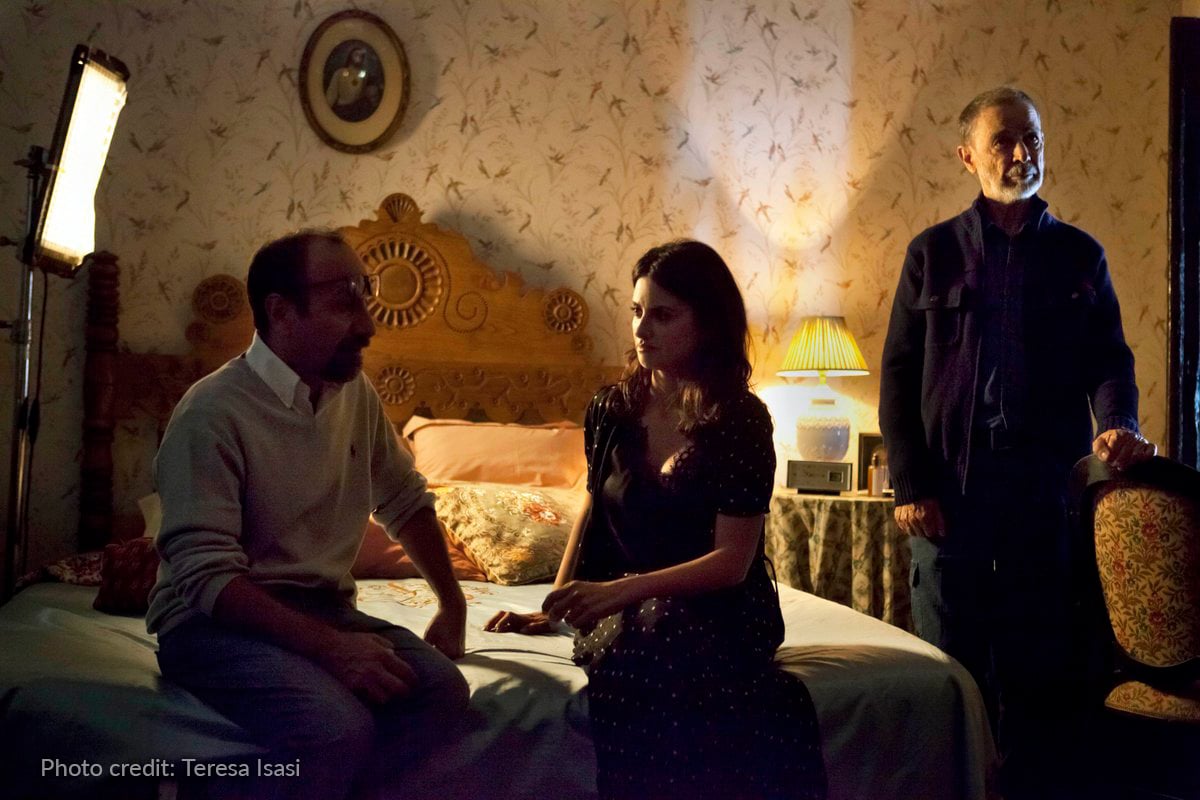 Asgar Farhadi, Penelope Cruz and José Luis Alcaine with his DMG Lumière MINI SWITCH during the filming of Everybody Knows.
Asgar Farhadi, Penelope Cruz and José Luis Alcaine with his DMG Lumière MINI SWITCH during the filming of Everybody Knows.
Inspired by masters of painting such as Goya, Velázquez, Caravaggio and Vermeer, and influenced by his birthplace, Tangier, Morocco, José Luis Alcaine believes that the light is never false. “In the north of Morocco there is a very strong sunlight, and in my films, you can see the light entering very intensely through the windows.” Most importantly, he believes that light needs to be credible so that it helps tell the story and reflect the passage of time.
Pain and Glory
Before you watch the trailer, note the DMG Lumière SL1 SWITCH fixtures seen in this behind-the-scenes photo from Pain & Glory.
Another example of José Luis Alcaine’s ability to correctly and effectively illuminate characters’ eyes and faces can be found in Pedro Almodovar’s film Pain and Glory starring Penélope Cruz and Antonio Banderas. To illuminate the film, José Luis Alcaine used numerous DMG Lumière fixtures, including the SL1 SWITCH and the MINI MIX®, which was new technology at the time this film was in production. Alcaine used these fixtures to convey the inner state of the characters and the emotional value of the scenes.
Pedro Almodovar conducting pre-production camera tests with DMG Lumière SL1 SWITCH fixtures for Pain and Glory.
In his film career, which spans over half a century, José Luis Alcaine has always been willing to explore new technologies and lighting techniques to create unique cinematography that is grounded in his intuition and his sense of the unexpected. Just as he was the first to use fluorescent tubes as key lights in the 1970s, he has welcomed DMG Lumière LED fixtures onto his sets - this includes the innovative, six-chip, color-mixing, MIX LED technology. When filming on Pain and Glory had finished, he commented that the film had "a lot to do with the continuous and preponderant use of DMG Lumière lights,” and specifically said "it is the best fixture I have ever used" about the MINI MIX fixture.
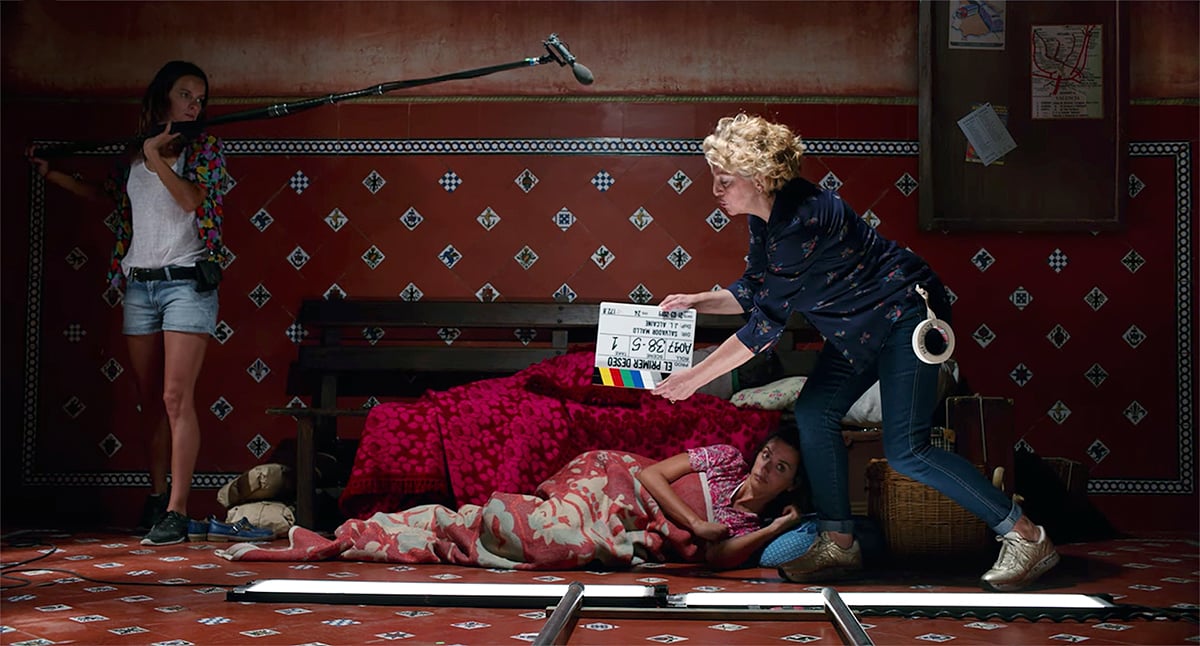 This final “meta-autobiographical-scene” at the end of Pain and Glory includes DMG Lumière SL1 SWITCH fixtures on the floor.
This final “meta-autobiographical-scene” at the end of Pain and Glory includes DMG Lumière SL1 SWITCH fixtures on the floor.
José Luis Alcaine has been nominated for a 2020 Goya Award for his work in Pain and Glory. The Goya Awards are Spain's top cinematic honor, and this marks his 20th Goya Award nomination. It is masters of light like José Luis Alcaine that keep inspiring Rosco to continuously create new lighting tools that help artists around the world achieve their visions. We thank José Luis Alcaine for placing his trust in our new filmmaking technologies, and for the feedback he provided about the DMG Lumière lights featured in this article.
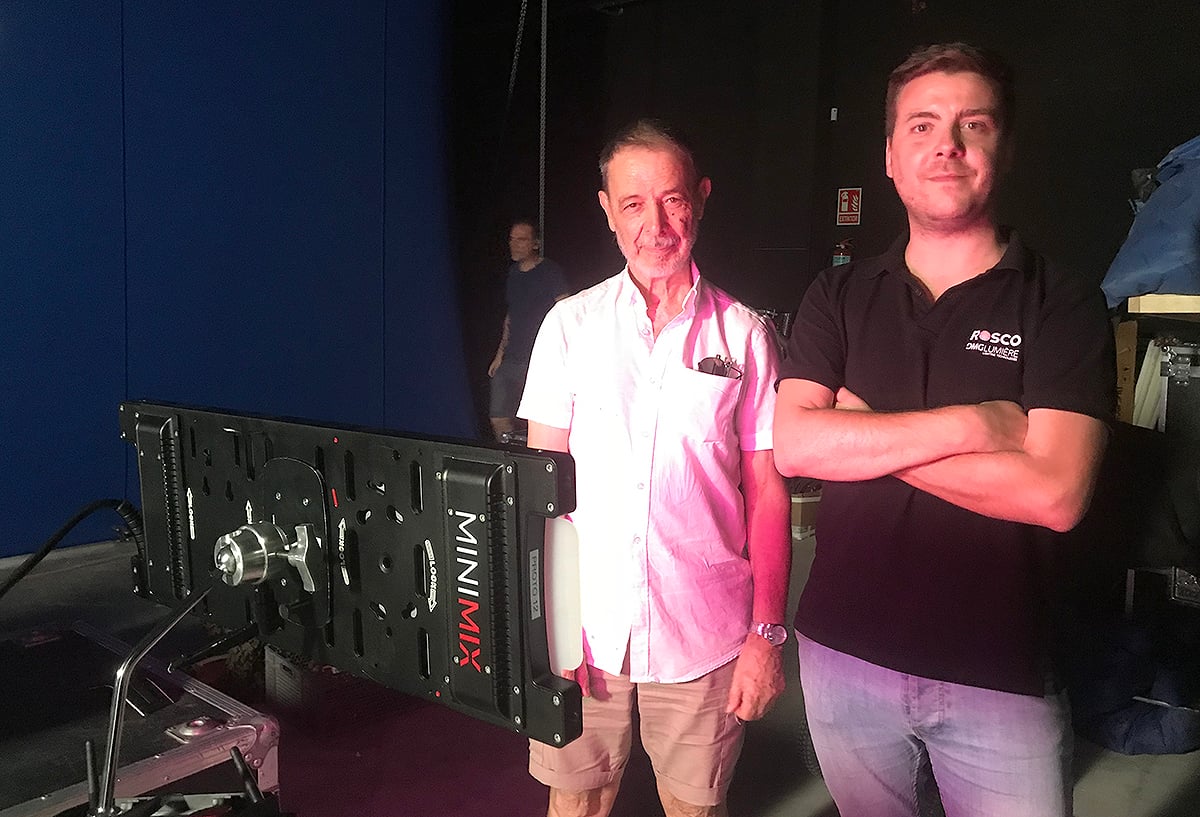 José Luis Alcaine poses with Rosco’s Daniel Vozmediano and his MINI MIX on the set of Pain and Glory.
José Luis Alcaine poses with Rosco’s Daniel Vozmediano and his MINI MIX on the set of Pain and Glory.
You can explore the DMG Lumière LED fixtures that José Luis Alcaine used to shoot Domino, Everybody Knows and Pain and Glory, on the DMG Lumière by Rosco website: www.dmglumiere.com.

